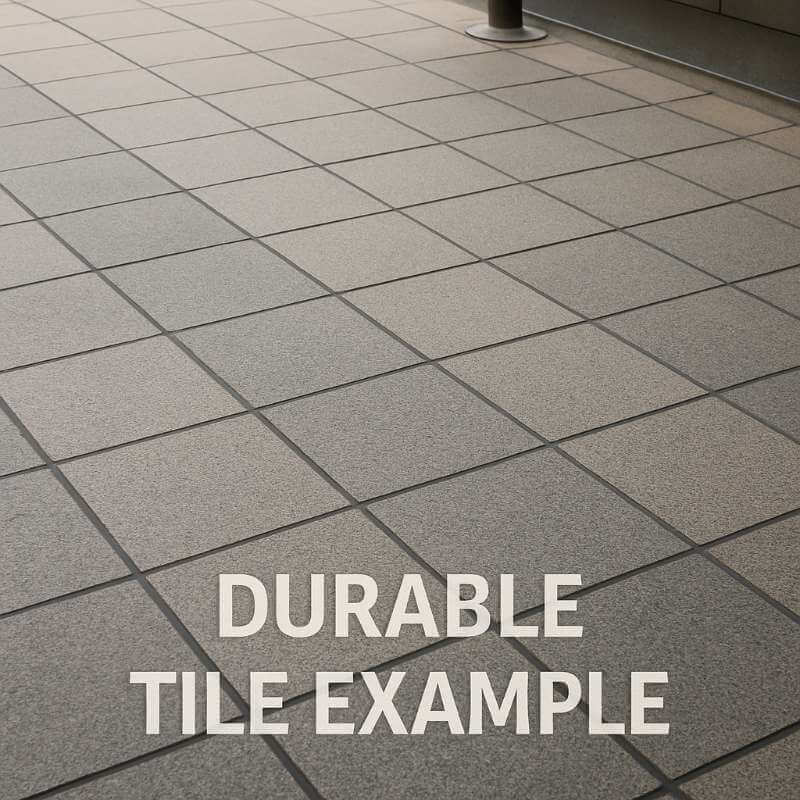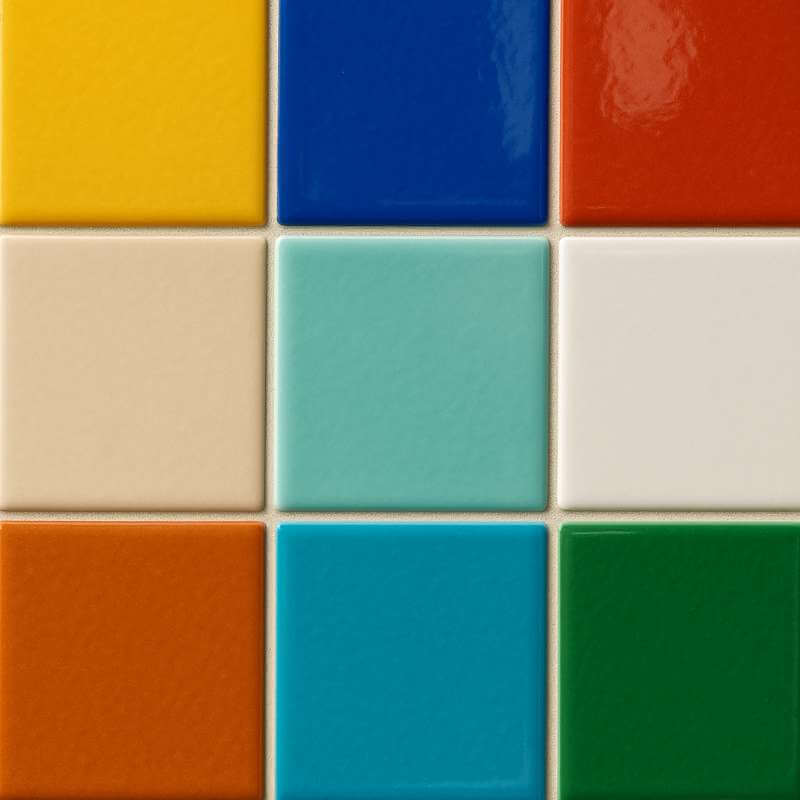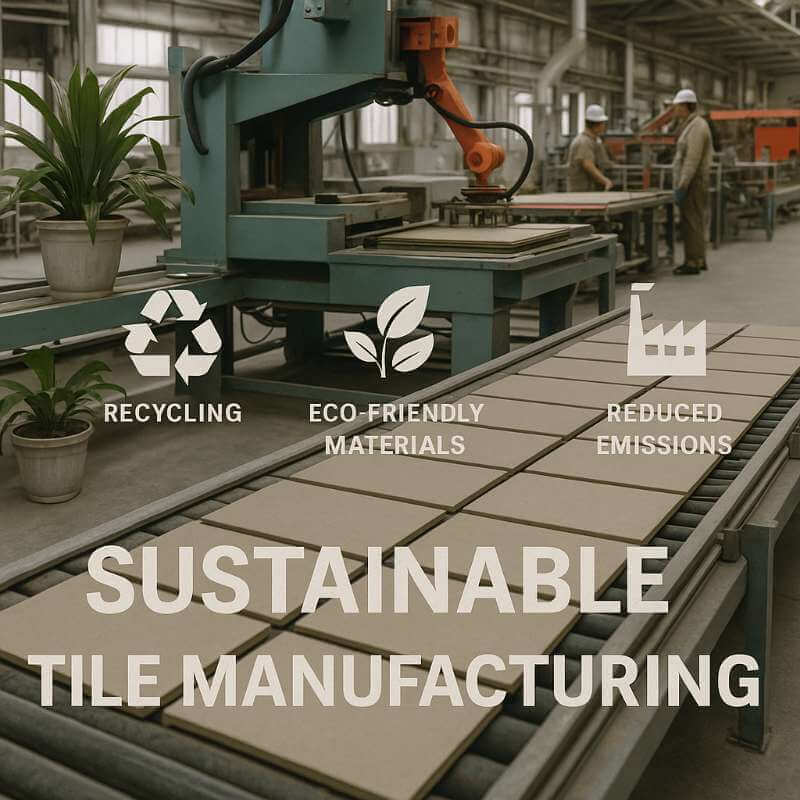In the competitive arena of ceramic tile manufacturing, decision-makers face the persistent challenge of enhancing product durability and visual appeal. This article aims to address that very concern by examining how the use of zirconium material impacts tile production. This additive offers clear advantages, such as increased strength and durability, which can significantly elevate product quality. Its effectiveness has become evident through various industry studies, applications, and practical insights shared by manufacturers. Understanding these benefits equips industry leaders with the knowledge needed to optimize manufacturing processes and meet market demands effectively. Manufacturers must stay informed about the evolving strategies in tile production to remain competitive and responsive to customer needs.
Zirconium is recognized not merely for its mechanical properties but also for its role in improving aesthetic aspects of ceramic tiles. Given the constant competition in this sector, being aware of innovative materials can provide a considerable advantage. As the industry continues to evolve, this article will explore the significant role that zirconium plays in enhancing tile quality and performance.
What Role Does Zirconium Silicate Play in Ceramics?
Zirconium silicate plays a vital role in improving ceramic tile formulations. This material is known for its unique properties and how they enhance the overall quality of products in this industry. Specifically, the incorporation of such materials contributes to improving mechanical strength and durability of tiles, making them more suitable for high-stress environments. This characteristic is essential in both residential and commercial applications where durability is crucial for consumer satisfaction.
The addition of zirconium influences not only the strength but also the temperature stability and optical properties of tiles. When integrated effectively, this additive can assist in minimizing issues such as warping or cracking while undergoing various firing processes during production.
Another notable benefit is the reduction in defects commonly attributed to the use of lower-quality materials. When manufacturers use a material of higher quality like zirconium, they often experience fewer failures, which can easily escalate production costs.
Importantly, successful implementation often involves understanding the proper ratios and types of zirconium available in the market. By leveraging cutting-edge techniques and maintaining quality control standards, producers can ensure that they maximize the benefits.
Some prevalent advantages of using zirconium include:
- Improved mechanical properties resulting in stronger tiles.
- Enhanced thermal stability preventing deformation during high-temperature processes.
- Facilitated better surface finishes that appeal aesthetically to consumers.
| Property | Traditional Tiles | Tiles with Zirconium |
|---|---|---|
| Mechanical Strength | Moderate | High |
| Thermal Stability | Low | Enhanced |
| Optics | Basic Appearance | Improved Visual Quality |
| Defect Rate | Higher | Lower |
How Does Zirconium Silicate Improve Tile Durability?
Increasing tile durability is a primary focus for manufacturers, and zirconium plays a crucial role in achieving exceptional results. The presence of this additive contributes significantly to the overall strength of the ceramic matrix, which amplifies its resistance to impacts. Tiles containing this material are less likely to chip or crack, even under heavy use or high-stress conditions. This capability is vital for various applications, including flooring in hotels, restaurants, and retail spaces where foot traffic can be considerable.
Another important aspect of durability is the resistance to environmental factors like moisture, heat, and temperature fluctuations. Tiles made with this additive showcase higher resistance to thermal shocks, an essential quality for environments that experience extreme temperature changes. This characteristic benefits not only residential projects but also outdoor applications where tiles need to withstand various weather conditions.
Moreover, the incorporation of this material aids in improving wear resistance. Floors in high-traffic areas are likely to face continuous abrasion and potential damage. In these cases, the presence of zirconium significantly minimizes wear and enhances the longevity of tile surfaces, reducing the need for repair or replacement.
Factors to Consider for Optimizing Durability:
- Tile Thickness: Higher thickness can provide better durability but may increase weight.
- Surface Finish: A smoother finish can improve resistance to scratches and wear.
- Installation Method: Proper installation techniques can significantly enhance the tile’s ability to withstand stress.

This image shows ceramic tiles designed for high-traffic areas, emphasizing their durability and resistance.
In conclusion, tiles enhanced with zirconium prove to be an excellent choice for manufacturers focusing on durability. Clients will appreciate the longevity and increased strength of these products, ultimately driving sales and improving market share.
| Improvement Aspect | Tiles without Zirconium | Tiles with Zirconium |
|---|---|---|
| Impact Resistance | Moderate | High |
| Thermal Shock Resistance | Low | High |
| Wear Resistance | Average | High |
| Lifespan | Shorter | Longer |
What Are the Benefits of Using Zirconium Silicate?
Manufacturers in the ceramic tile industry enjoy numerous benefits when they incorporate zirconium. This material not only boosts physical properties but also positively impacts the entire production process.
First, zirconium enhances thermal stability, allowing the tiles to endure high temperatures during the firing process without deformation. This factor is crucial for quality control, ensuring that the final products maintain their shape and size, essential for installations that require precise measurements.
Second, the aesthetic qualities improve significantly with the addition of this compound. The material promotes greater vibrancy in colors, leading to tiles that appear more visually appealing. Customers are more likely to favor products that look stunning, directly enhancing product marketability. Additionally, tiles that resist fading retain their value over an extended period, an important aspect for both residential and commercial clients.
The production process also becomes more cost-effective. Tiles featuring this material experience fewer defects and failures, resulting in reduced material waste and better resource management. These factors contribute to lower costs for manufacturers over time.
Furthermore, companies that utilize this compound can respond quickly to shifting consumer preferences. High-quality, durable, and aesthetically pleasing tiles attract discerning customers, thereby increasing overall brand loyalty and satisfaction.
| Benefit | Description |
|---|---|
| Thermal Stability | Improved ability to withstand heat |
| Aesthetic Quality | Enhanced colors and smooth surfaces |
| Cost-Efficiency | Reduced waste, leading to better profit margins |
| Customer Satisfaction | Higher product appeal boosting sales |

This image displays ceramic tiles with vibrant colors and smooth finishes achieved through zirconium integration.
How Does Zirconium Silicate Influence Tile Aesthetics?
Aesthetic appeal is essential in the tile market, and zirconium plays a notable role in enhancing visual characteristics. This material not only contributes to the performance of the tiles but also significantly influences their appearance.
Zirconium contributes to richer, more vibrant colors in tiles, ensuring that they maintain their brightness and character over time. Customers are drawn to visually stunning products, which can directly affect sales figures. Furthermore, this enhancement in aesthetics also means that colors remain true and intact, allowing consumers to enjoy the beauty of their tiles without fear of fading.
The surface finish of tiles is equally critical. Thanks to zirconium, manufacturers can produce smoother surfaces, thereby reducing imperfections. Effective surface finishes increase the overall quality of tiles, making them more attractive in marketplaces where visual standards are high.
Additionally, the versatility of zirconium allows manufacturers to experiment with various designs, textures, and decorative finishes. This creative freedom leads to a broader range of products that cater to diverse customer tastes and preferences. With advanced aesthetics, companies can better differentiate their offerings, appealing to varied market segments seeking unique tile solutions.
Tips for Enhancing Tile Aesthetics with Zirconium:
- Color Matching: Ensure that the color formulation aligns with customer expectations.
- Surface Treatments: Utilize advanced treatment processes for improved smoothness.
- Design Variety: Experiment with different textures to widen the product portfolio.
In conclusion, incorporating zirconium significantly enhances the visual aspects of ceramic tiles, resulting in products that impress consumers. Companies that focus on these enhancements can expect increased sales, better customer retention, and strengthened brand reputation.
| Aesthetic Aspect | Standard Tiles | Tiles with Zirconium |
|---|---|---|
| Color Vibrancy | Moderate | High |
| Surface Texture | Rough | Smooth |
| Color Fading | Likely | Unlikely |
| Design Versatility | Limited | Extensive |
What Challenges Are Associated with Zirconium Silicate in Manufacturing?
Despite the numerous benefits associated with zirconium, challenges also arise that manufacturers should consider. Understanding these hurdles will help businesses adapt their strategies to make the most out of this valuable material.
One significant concern relates to supply chain issues. Sourcing high-quality material can prove difficult due to fluctuations in availability and pricing. This inconsistency may create uncertainties that can disrupt production schedules. Thus, manufacturers must establish and maintain reliable partnerships with suppliers who are committed to quality and consistency.
Technical limitations during processing warrant attention as well. Although these additives enhance many properties, they require specific handling techniques to ensure that all benefits are realized. Inconsistent handling can lead to defects that compromise product quality, affecting long-term market viability.
Furthermore, the cost of acquiring zirconium may be higher compared to other materials on the market. While the benefits usually justify the costs, businesses need to closely assess their budgets and production scales when including this additive in their formulations.
Lastly, staying informed about technological advancements in processing can assist manufacturers in overcoming these challenges. Embracing technology to optimize production can lead to more efficient use of materials.
Tips for Mitigating Challenges:
- Establish Strong Supplier Relationships: Create partnerships with reliable sources for consistent quality.
- Standardize Handling Procedures: Train staff in best practices for material incorporation.
- Monitor Market Trends: Keep an eye on fluctuating costs to plan budgets effectively.
In summary, while zirconium provides numerous advantages, being aware of potential challenges allows for proactive planning. With careful strategies focused on sourcing, handling, and continuous learning, manufacturers can optimize the use of this essential material in ceramic tile production.
| Challenge | Description |
|---|---|
| Supply Chain Fluctuations | Difficulty in sourcing consistent quality |
| Technical Processing Issues | Need for precise handling techniques |
| Cost Considerations | Higher upfront costs compared to alternatives |
| Quality Control Risks | Potential for defects due to improper usage |
How Can Manufacturers Optimize Zirconium Silicate Usage?
To fully harness the benefits of zirconium in ceramic tile manufacturing, it is essential to optimize its usage. Employing effective strategies will help manufacturers maximize the benefits derived from this additive.
First, determining the right incorporation levels is vital. Adjusting the percentage of this material in formulations can significantly impact the final product. Manufacturers should conduct systematic testing to find the optimal ratios that enhance desired properties without incurring excess costs.
Next, consistent handling protocols should be put in place. Proper training for operators on measuring and mixing this additive into the ceramic batch minimizes inconsistencies, leading to improved quality assurance.
Investment in quality control measures is another crucial area. Regular monitoring of products at multiple stages of production allows for the identification and correction of defects before reaching the market. This proactive approach ensures that any issues involving zirconium can be addressed quickly to maintain product quality.
Furthermore, investing in research and development can lead to innovations in methods or formulations that maximize the effectiveness of zirconium. Continuous improvement is essential for adapting to market needs and maintaining a competitive edge.
| Optimization Strategy | Description |
|---|---|
| Determine Proper Levels | Test variations to find the optimal percentage |
| Consistent Handling | Train operators on best practices for mixing |
| Quality Control Measures | Implement regular testing procedures |
| Invest in R&D | Explore new methods and formulations |
What Are the Environmental Considerations of Zirconium Silicate?
As emphasis on sustainability grows, the environmental impact of zirconium should be carefully assessed. Understanding these factors helps manufacturers make informed, responsible decisions.
First and foremost is the sourcing of zirconium, which can present environmental challenges. The extraction of raw materials may lead to habitat destruction and pollution if not managed responsibly. Manufacturers should partner with suppliers who prioritize sustainable practices, ensuring minimal harm to ecosystems during extraction.
Second, it is essential to acknowledge the energy consumption involved in the processing of zirconium. High energy demands contribute to the carbon footprint of ceramic tile production, prompting businesses to innovate their energy sources. Manufacturers should consider adopting energy-efficient processes and explore options for renewable energy implementation in their operations.
Additionally, recycling waste that results from zirconium use can further mitigate environmental impacts. By focusing on recovery and reuse, companies can lessen waste and promote a more sustainable production process.
Lastly, manufacturers can keep an eye on advancements in sustainable practices within the industry. Innovations that reduce resource usage or enhance the effectiveness of zirconium can contribute to a greener footprint.

This image illustrates sustainable practices in ceramic tile manufacturing, showcasing eco-friendly methods and materials.
In summary, while zirconium showcases outstanding benefits, manufacturers must remain vigilant about its environmental impact. By embracing sustainable practices and innovative solutions, companies can help foster a more sustainable tile industry.
| Environmental Consideration | Description |
|---|---|
| Sustainable Sourcing | Collaborate with environmentally responsible suppliers |
| Energy Consumption | Address the carbon footprint of production |
| Waste Management | Focus on recycling and reusing waste materials |
| Habitat Impact | Minimize destruction caused by mining activities |
How Do Industry Standards Affect Zirconium Silicate Use?
Industry standards play a crucial role in guiding the effective utilization of zirconium in tile manufacturing. Ensuring compliance with various regulations is essential for maintaining both quality and safety during production.
Different regions may enforce specific standards governing products made with zirconium. Adhering to these guidelines not only protects consumers but also helps maintain the credibility of manufacturers. Compliance promotes high-quality production and demonstrates commitment to industry excellence.
Furthermore, staying updated on changes in regulations that influence the use of zirconium is vital for businesses in the sector. Regularly reviewing compliance requirements helps manufacturers avoid potential legal action and ensures they remain competitive in the market.
Manufacturers that obtain relevant certifications related to zirconium use can enhance their reputation and appeal to consumers. Being recognized for adhering to established quality standards provides assurance that builds customer trust—an essential aspect in a market that increasingly values credentials.
Tips for Navigating Regulatory Compliance:
- Regular Training: Educate staff on the latest industry protocols and standards.
- Documentation: Keep thorough records to showcase compliance efforts.
- Consult Experts: Work with legal advisors or industry professionals for guidance on regulations.
In conclusion, understanding and conforming to industry standards regarding zirconium use fosters quality and safety in ceramic tiles. This approach benefits both manufacturers and consumers, creating a more reliable market.
| Industry Standard | Description |
|---|---|
| Compliance Regulations | Ensure adherence to local and global standards |
| Quality Protocols | Promote high manufacturing benchmarks |
| Certifications | Enhance reputation through recognized processes |
| Regulatory Updates | Monitor changes in laws impacting production |
What Innovations Are Emerging in Zirconium Silicate Applications?
The ceramic tile industry is highly dynamic, continually evolving with fresh innovations. This section aims to highlight some exciting developments that relate to the use of zirconium.
Recent research indicates the possibility of enhancements in zirconium formulations, making lighter-weight tiles feasible without sacrificing strength. This innovation offers opportunities for manufacturers who wish to create more cost-effective and versatile products tailored to consumer demands.
Moreover, advancements in processing techniques allow for the seamless integration of zirconium into various ceramic formulas. This added flexibility enables custom solutions tailored specifically to different market segments and consumer preferences.
Additionally, sustainability-focused innovations are emerging, highlighting eco-friendly possibilities for manufacturers. Companies are exploring methods to recycle and reuse zirconium effectively, minimizing environmental footprint and promoting operational sustainability.
Staying updated on these innovations is essential for manufacturers aiming to retain competitive advantages in the tile market. By adapting to new techniques and formulations, businesses can not only enhance their product offerings but also align with consumer preferences for more responsible products.
| Innovation | Description |
|---|---|
| Lightweight Formulations | Create cost-effective tiles without sacrificing quality |
| Advanced Processing Techniques | Enable seamless integration of zirconium |
| Sustainable Practices | Focus on recycling and reducing waste |
| Custom Solutions | Tailor products to meet specific market needs |
How Does Zirconium Silicate Compare to Other Additives?
Understanding how zirconium compares with other additives is essential for manufacturers making informed decisions. This comparison aids in identifying suitable alternatives for various production applications.
When assessing mechanical strength, the zirconium product generally outperforms common alternatives, such as talc and feldspar. Its mechanical properties contribute to creating more durable tiles, catering well to high-traffic locations where resilience is paramount.
Regarding aesthetic enhancements, this material usually provides a higher level of color retention and surface smoothness. While some alternatives may strengthen specific aspects, few can match the comprehensive benefits provided by zirconium.
Cost considerations also factor into the equation. Although zirconium may have a higher initial price point, the long-term savings resulting from reduced defects and enhanced durability can justify the upfront costs, making it a smart investment in the long run.
Ultimately, evaluating these various factors can guide manufacturers towards the best additive choices for their needs. Understanding the strengths and weaknesses of zirconium versus alternatives enables companies to optimize their formulations for superior tile quality.
| Comparison Aspect | Zirconium | Other Additives |
|---|---|---|
| Mechanical Strength | High | Moderate |
| Aesthetic Quality | Enhanced | Average |
| Cost Efficiency | Long-term savings | Short-term gains |
| Versatility | Highly adaptable | Limited |
Conclusion
In summary, zirconium significantly enhances the quality, durability, and aesthetic appeal of ceramic tiles. By incorporating this additive, manufacturers can improve the performance of their products, leading to increased satisfaction and loyalty among their customers. The flexibility of applications combined with ongoing innovations makes this material a valuable asset in the industry. At Global Industry, we encourage you to implement these insights into your production processes. Don’t hesitate to reach out for further engagement or explore additional resources that can deepen your understanding of innovative materials.
FAQ Section
Q1: What is zirconium silicate used for in ceramics?
This material is primarily used to enhance the durability, aesthetic quality, and thermal stability of ceramic tiles.
Q2: Is zirconium silicate environmentally friendly?
While responsibly sourced zirconium can be eco-friendly, the processing methods may have environmental impacts that need to be addressed.
Q3: What are the advantages of using zirconium silicate in tile manufacturing?
The benefits include increased strength, improved visual appeal, and heightened resistance to wear and thermal shocks.
Q4: Are there any safety concerns with zirconium silicate?
Safety concerns generally relate to dust inhalation during handling, highlighting the need for proper safety measures during manufacturing.
Q5: How can I ensure optimal use of zirconium silicate?
Manufacturers should follow industry best practices for incorporation, storage, and handling to significantly improve outcomes in tile manufacturing.
